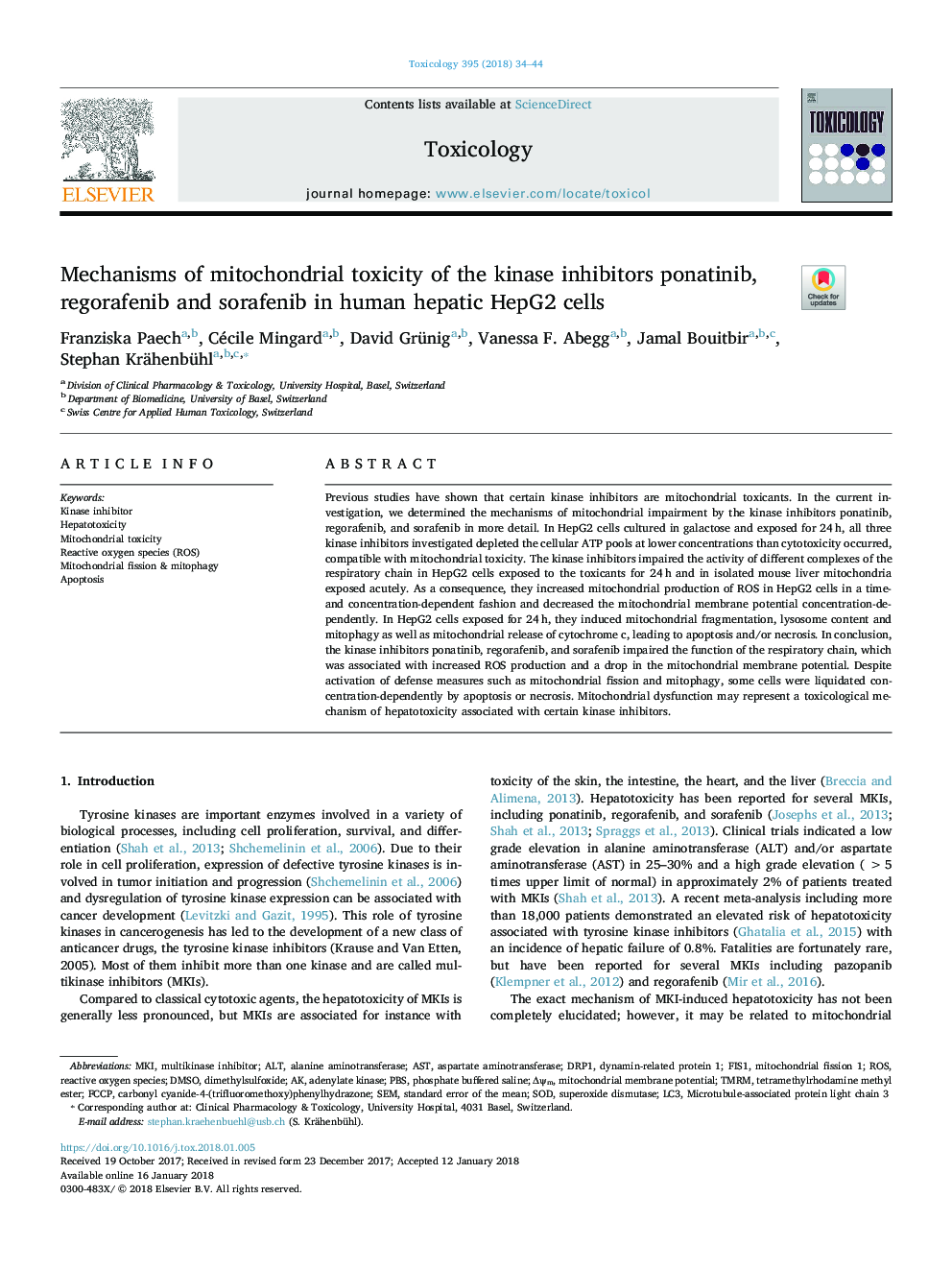| Article ID | Journal | Published Year | Pages | File Type |
|---|---|---|---|---|
| 8552834 | Toxicology | 2018 | 11 Pages |
Abstract
Previous studies have shown that certain kinase inhibitors are mitochondrial toxicants. In the current investigation, we determined the mechanisms of mitochondrial impairment by the kinase inhibitors ponatinib, regorafenib, and sorafenib in more detail. In HepG2 cells cultured in galactose and exposed for 24â¯h, all three kinase inhibitors investigated depleted the cellular ATP pools at lower concentrations than cytotoxicity occurred, compatible with mitochondrial toxicity. The kinase inhibitors impaired the activity of different complexes of the respiratory chain in HepG2 cells exposed to the toxicants for 24â¯h and in isolated mouse liver mitochondria exposed acutely. As a consequence, they increased mitochondrial production of ROS in HepG2 cells in a time- and concentration-dependent fashion and decreased the mitochondrial membrane potential concentration-dependently. In HepG2 cells exposed for 24â¯h, they induced mitochondrial fragmentation, lysosome content and mitophagy as well as mitochondrial release of cytochrome c, leading to apoptosis and/or necrosis. In conclusion, the kinase inhibitors ponatinib, regorafenib, and sorafenib impaired the function of the respiratory chain, which was associated with increased ROS production and a drop in the mitochondrial membrane potential. Despite activation of defense measures such as mitochondrial fission and mitophagy, some cells were liquidated concentration-dependently by apoptosis or necrosis. Mitochondrial dysfunction may represent a toxicological mechanism of hepatotoxicity associated with certain kinase inhibitors.
Keywords
Drp1LC3ΔΨmFCCPALTFis1TMRMMKIPBSDMSOROSAdenylate kinaseASTAspartate aminotransferaseAlanine aminotransferaseApoptosisstandard error of the meanDimethylsulfoxidemicrotubule-associated protein light chain 3SODMitochondrial toxicityHepatotoxicitySuperoxide dismutasePhosphate buffered salinetetramethylrhodamine methyl esterSEMmultikinase inhibitorKinase inhibitorMitochondrial membrane potentialdynamin-related protein 1Carbonyl cyanide-4-(trifluoromethoxy)phenylhydrazoneReactive oxygen species (ROS)Reactive oxygen species
Related Topics
Life Sciences
Environmental Science
Health, Toxicology and Mutagenesis
Authors
Franziska Paech, Cécile Mingard, David Grünig, Vanessa F. Abegg, Jamal Bouitbir, Stephan Krähenbühl,
